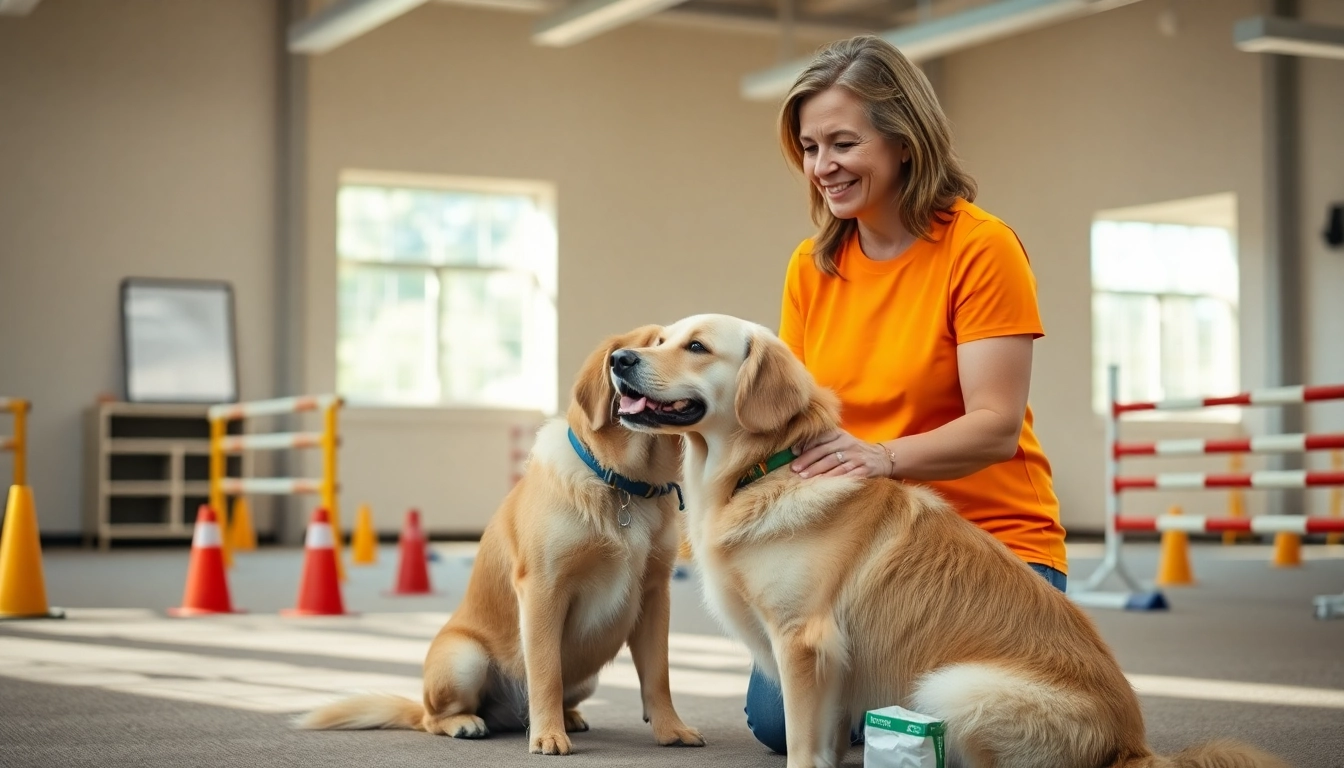Understanding the Role of a Service Dog Trainer
A service dog trainer plays a vital role in preparing canine companions for their specialized duties in assisting individuals with disabilities. Training isn’t merely about teaching obedience; it encompasses a sophisticated blend of behavioral education, socialization, and skill-specific training. For those interested in becoming proficient in this field, understanding the core functions of a service dog trainer is essential.
What Does a Service Dog Trainer Do?
The primary responsibility of a service dog trainer is to train dogs specifically for helping individuals with disabilities. This involves several fundamental tasks:
- Assessment: Evaluating both the dog’s temperament and the specific needs of the individual requiring assistance.
- Training Programs: Developing individualized training programs tailored to the specific requirements, such as mobility assistance, anxiety support, or medical alert services.
- Behavior Modification: Implementing strategies to address unwanted behaviors and reinforce positive ones.
- Public Access Training: Teaching dogs to behave appropriately in public settings, allowing them to accompany their handlers in various environments.
Importance of Training Techniques
A service dog trainer must be well-versed in various training techniques to effectively prepare dogs for their roles. Strategies may include positive reinforcement, clicker training, and socialization exercises. Using these methods fosters trust and a cooperative relationship between the dog and its handler, ultimately leading to more effective assistance.
Common Challenges Faced by Service Dog Trainers
Despite the passionate dedication service dog trainers bring to their work, they encounter several challenges:
- Individual Dog Variability: Each dog comes with a unique temperament and background, which can complicate training strategies and timelines.
- Owner Expectations: Educating clients on realistic outcomes and the time involved is crucial but may lead to misunderstandings.
- Compliance with Regulations: Navigating through varying state and federal regulations can pose a challenge, especially when it comes to public access laws for service dogs.
Essential Skills for Aspiring Service Dog Trainers
To become a successful service dog trainer, one must cultivate a blend of skills that are vital for instructing both dogs and their potential handlers.
Animal Behavior Knowledge
Understanding canine behavior is paramount. This involves grasping the principles of learning theory and motivational techniques. A solid foundation in animal psychology is crucial in tailoring training approaches that cater to individual dogs and their handlers’ needs.
Effective Communication with Dog Owners
Service dog trainers must possess excellent communication skills. The ability to explain training techniques and rationales to dog owners is essential, ensuring that they feel confident and empowered to carry out ongoing training at home.
Problem-Solving Strategies
Training does not always proceed as expected. Service dog trainers need to think on their feet and adapt their methodologies based on each dog’s progress and challenges faced during the training process. Being resourceful and creative will yield the best outcomes.
Training Methods for Service Dogs
There are various training methods specifically tailored for service dogs, depending on their future roles and responsibilities.
Positive Reinforcement Techniques
Positive reinforcement training is widely recognized as the most effective strategy when training service dogs. This method rewards desired behaviors, such as sitting or staying, with treats or praise, encouraging repetition of those behaviors. This creates a happier training atmosphere, cultivating a strong bond based on trust.
Socialization and Public Access Training
An essential component of training is ensuring that service dogs can confidently behave in public settings. This includes exposing them to various environments, people, and stimuli to enhance their comfort levels and minimize anxiety. Practicing in the environments where they will be expected to operate creates a smoother transition into their roles.
Specialized Skills for Various Disabilities
Training also involves imparting specialized skills specific to the needs of their future handlers. For instance, a dog might be trained to:
- Retrieve Items: For individuals with mobility limitations.
- Help with Medical Alerts: For conditions like seizures or diabetes.
- Provide Emotional Support: Teaching dogs to recognize signs of anxiety or distress.
Steps to Become a Certified Service Dog Trainer
For those aspiring to enter this rewarding field, several structured pathways can lead to certification as a service dog trainer.
Educational Pathways and Certifications
A formal education in animal behavior, training, or related fields can significantly bolster a candidate’s qualifications. Many organizations offer certification programs, which typically involve coursework and practical assessments in dog training methodologies.
Gaining Practical Experience
Hands-on experience is invaluable. Aspiring trainers should consider internships or apprenticeships under experienced professionals. This experience allows them to observe different training techniques in action and understand the practical applications of theoretical knowledge.
Networking within the Canine Community
Building a robust professional network can open pathways for opportunities in this competitive field. Joining canine training associations, participating in workshops, and attending conventions can provide exposure to best practices and connect trainers with industry leaders.
Measuring Success as a Service Dog Trainer
Establishing metrics to evaluate success is crucial for continual improvement in training methodologies and client relationships.
Client Satisfaction and Feedback
One of the most significant indicators of success is client satisfaction. Collecting feedback through surveys or testimonials not only aids in performance assessment but also builds trust and rapport with clients. Open lines of communication encourage clients to articulate their needs and experiences.
Tracking Progress of Service Dogs
Monitoring the dogs’ development throughout the training phase is essential. Trainers can utilize daily progress reports to document achievements and identify areas requiring additional focus, ensuring that each service dog is fully prepared for its vital role.
Continuous Education and Training Opportunities
The field of service dog training is ever-evolving, necessitating ongoing education through workshops, seminars, and new training techniques. Staying abreast of the latest advancements in canine behavior analysis and training methodologies is critical to maintaining a high standard of practice.
Ultimately, becoming a proficient service dog trainer demands a dedicated blend of knowledge, practical experience, and ongoing education. By mastering the essential skills outlined in this article, trainers can successfully build a fulfilling career while empowering individuals with service dogs to lead more independent lives.
